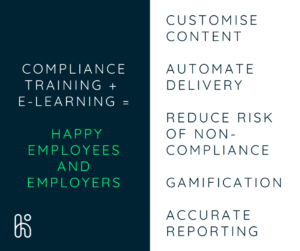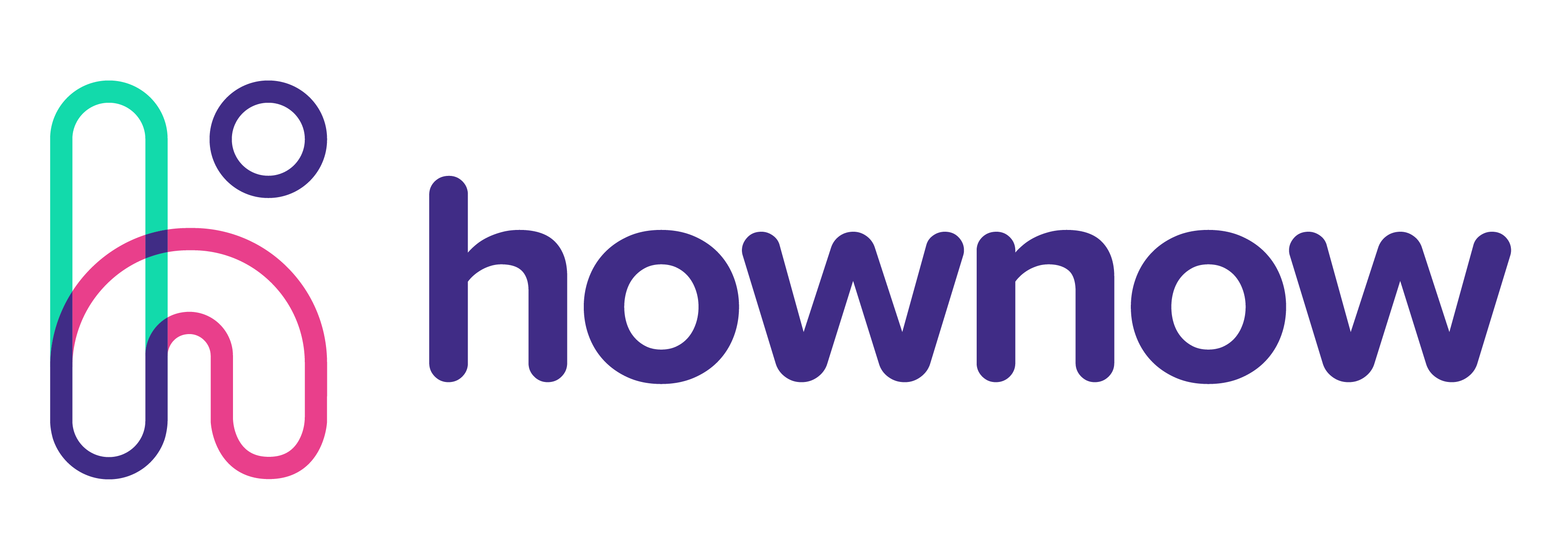Compliance training + e-learning = happy employees and employers
We were all so busy moving our learning content online and making it an engaging experience that somebody forgot to tell compliance training! Well, not exactly, but there is a lingering, ironic air that the one mandatory type of learning is something to be dreaded.
The one-size-fits-all content and typically disengaging delivery feed into the lack of motivation for employees to complete and their managers to ensure compliance. The way to destroy this stereotype? Apply the principles and features of your online learning platform to compliance training. Here are some of the key benefits and features when e-learning meets compliance training.
Customise the content
Even if you’ve purchased an external compliance course, an intelligent learning platform will let you complement it with your resources. Although, if you’re creating a course, you can still apply these ideas.
One of the best tactics is to break up long videos with shorter and more engaging content, that way, you avoid the fatigue of hour-long sessions back to back. This also makes it easier for employees to revisit the material when they need it and reinforce what they learnt. Too much long-form content will make it tedious and difficult for people to dip back in for the detail they need.
We mentioned videos first, as they’re the most common format people use alongside clickable presentations, but you should consider tapping into all the available content types. For example, audio resources are can be consumed more freely and in more places than video content, while an infographic or checklist might communicate written content far more effectively.
If you’re using a platform like HowNow, your learner can even create and share their own key takeaways without leaving the course. We like to call them Nuggets, and you better believe they satisfy the hunger for sharing knowledge.
Tailor courses to roles and employees
Slightly similar to the above, yet worthy of its own subheading. It’s important that you consider how different roles will be affected by compliance training and provide resources that go beyond the bare minimum of simple complying. Using a learning platform gives you the freedom to complement the course content with up-to-date commentary on regulatory changes and thought leadership pieces on how it will affect someone’s role.
For example, GDPR training needs to be completed by all, but it will impact a sales rep in a different way to a programmer. In these situations context is king, and relevant resources are what will help you achieve both that and better compliance experiences.
Automate delivery and reminders
There’s no joy in chasing up your employees on whether they’ve completed a course, and they’re not engagements they relish either. Has any enjoyable email ever begun with ‘if you’ve not completed’?
Wouldn’t it be better if you could automate the scheduling and delivery of reminders? These act more like gentle nudges as the deadline approaches, whether that’s for an existing employee that’s approaching a deadline or a new joiner who needs to be compliant by a certain date.
Another pain point occurs when multiple courses are set with the same deadline, it creates a daunting mountain of compliance. A learning platform can be your guide to the summit, by allowing you to set up staggered, automated content and reminder delivery.
Reduce the risk of non-compliance
The fact is that when it comes to compliance, you just can’t afford to miss anything or let someone slip through the net. If you’re compiling the data and measuring completion manually, there’s a fair chance that human error might happen. So, why not let a learning platform do the heavy lifting? Picture dashboards depicting employee completion, indicators of who’s behind on the course content and the all-important percentages in one place.

Easy and accurate reporting
If you need to prove staff compliance to regulatory bodies or your company’s leadership, a learning platform can be a blessing. Especially when those courses need to be completed on a six-monthly or yearly basis, this is when you need a system that can automate delivery and reporting. Simply export the reporting data and send on those glorious compliance statistics.
We understand that you might need to import your compliance data into your centralised platform, and that’s why we have an API that feeds this information directly into your HRIS. That way, you can access all of your updated employee data in one place.
Gamification
The necessity of compliance training means you’re unlikely to get a pat on the back for completing it. In reality, it’s probably the area of learning that most needs motivation, pep talks and praise. Sounding sincere about a GDPR refresher or anti-theft course is tricky, so that’s where you can apply gamification.
You might choose to create badges and incentives for completing courses, or create a leaderboard of ‘who’s compliant and who’s defiant’ (or just hasn’t got round to it yet). There is a balance to be struck, however, to ensure you’re not detracting from the important content. A Frank Sinatra-themed ‘comply with me’ competition that offers a flight voucher for the first completion is probably a step too far.
Compliance training is just the tip of the online learning iceberg, an intelligent learning platform connects your learners with the resources they need in their everyday workflows. Get in touch if you’re ready to comply to a better way of training and learning.







